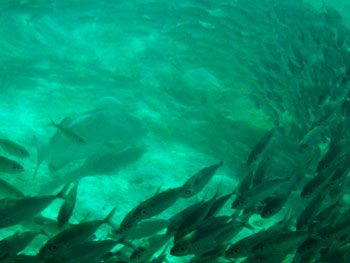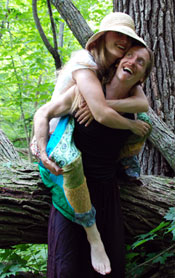Rebecca and I have been experimenting with eating different grains, and are quickly realizing that here in the United States we’ve developed a pretty narrow viewpoint of grain. Here, wheat and oats rule. There’s nothing wrong with wheat and oats, both of which are quite yummy, but the more we explore, the more we discover that there is a whole planet’s worth of wondrous grains out there, all with different flavours and nutritional benefits. Our latest discovery was teff.
The most remarkable thing about teff is its size. It’s apparently the world’s smallest grain, as the carefully posed photo below displays.
We soon learned that teff is used to make one of our favorite flatbreads — injera — which we had often eaten at a favorite Ethiopian restaurant in the Twin Cities. The huge plate-sized flatbread is served with a variety of colorful bean, vegetable, or meat mixtures set in piles on its surface, and you eat by breaking off bits of the bread and using this as an edible ‘spoon’ to eat the mixtures.
Teff comes in different colors — ours is a dark variety, which has a nutty flavor. We’ve only begun experimenting, thus far having had it only as a breakfast porridge, which was very delicious. We’re excited to discover new ways to use it.
Another wonderful thing about teff is that it’s a species of Lovegrass, and it’s always nice to eat something that has such a ‘lovely’ name. It’s a very important grain in Ethiopia, and it’s interesting to think that even a tiny pouch of this grain would be enough to sow an immense field. It’s also highly nutritious.
We’d encourage people to give this grain a try, and if anyone has any good recipes for using teff, feel free to post them on the comments below!
Posted on January 21st, 2010 by Kenton Whitman
Filed under: Plants | 10 Comments »




